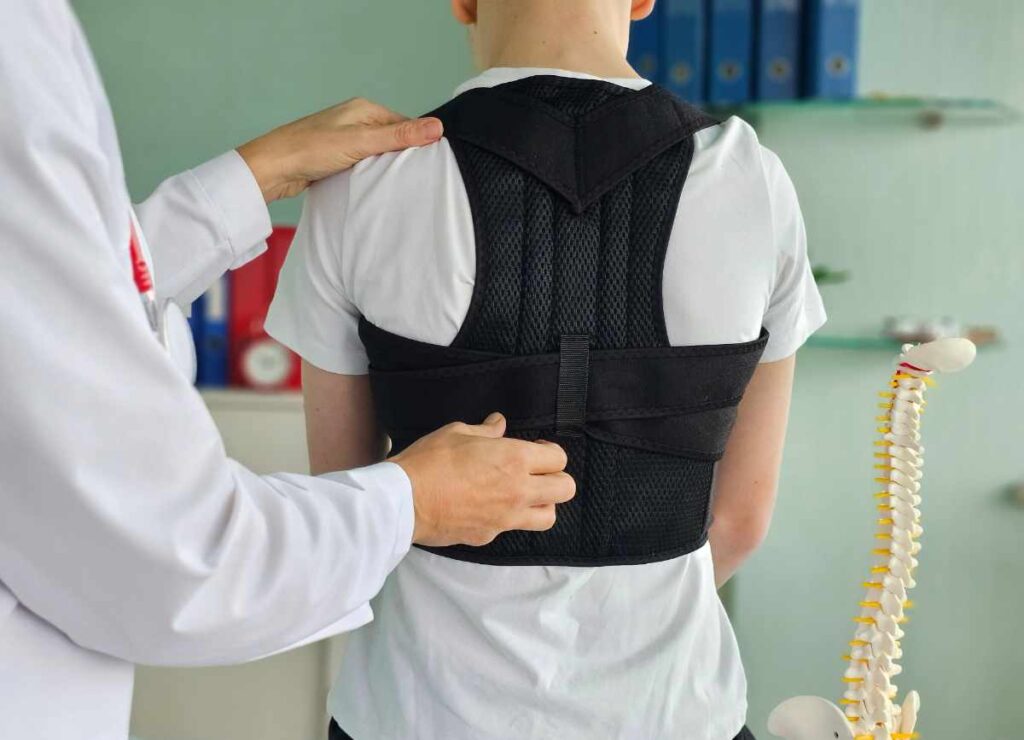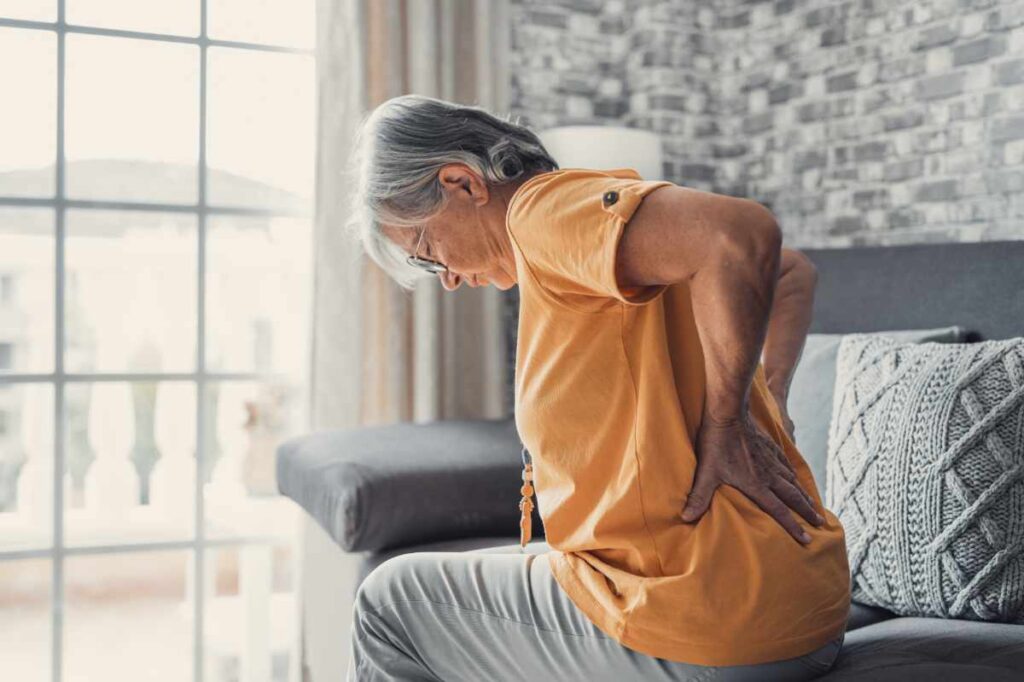During my many years as a physical therapist, I’ve observed that hip fractures consistently present some of the most significant rehabilitation challenges among all fracture types. While rehab and care has improved (1), hip fracture recovery can be a slow and tedious process. A hip fracture can be life-changing for many people, particularly older people. The surgery to repair a hip fracture presents its own risks including avascular necrosis, a nonunion of bone, and bone infection.
This is why I’m excited today to share an evidence-based intervention that has been shown to improve recovery. A recent study published in the Journal of Orthopaedic Translation (2) offers promising findings about low intensity vibration therapy – a simple intervention that could significantly improve recovery after a hip fracture.
Low intensity vibration therapy has also been shown to enhance bone implants. This is important for people who have joint replacements, dental implants and bone grafts. We discuss this later in the post.
What is Low Intensity Vibration Therapy?
LiV is a biophysical intervention that provides non-invasive, full body, mechanical stimulation. In simpler terms, it involves standing on a platform that vibrates at a high frequency (35 Hz) but with low magnitude (0.3g). (These parameters are very similar to the Marodyne LiV.) Patients received this treatment for just 20 minutes per day.
The Research on LiV for Hip Fracture Recovery
Researchers from the Chinese University of Hong Kong conducted a randomized double-blinded, placebo-controlled trial involving 62 elderly patients with trochanteric hip fractures. Participants received either real LiV or a placebo treatment (just 3 seconds of vibration at the start) for 20 minutes daily over 14 days during their hospital stay.
How LiV Improves Hip Fracture Recovery
The results were quite remarkable, especially considering the short duration of the intervention (just 14 days). Here’s what the study found:
Improved Muscle Strength
Patients who received LiV treatment showed significantly higher quadriceps muscle strength in their affected leg compared to the placebo group. By week 26, the LiV group had about 40% stronger muscles than the control group. This is crucial because quadriceps strength is essential for walking, climbing stairs, and getting up from chairs – all vital activities of daily living.
Better Balance
LiV treatment significantly improved balance compared to the placebo group. This is particularly important as poor balance after a hip bone fracture increases fall risk, which could lead to another fracture.
Improved Mobility
There was a significant increase in patients who could successfully complete the Timed Up and Go (TUG) test in the LiV group. By week 26, 57.1% of LiV patients could complete this test, compared to only 13.3% at baseline – a dramatic improvement.
Enhanced Quality of Life After Hip Fracture Recovery
Perhaps most importantly, LiV treatment significantly improved quality of life scores. The treatment group showed particular improvements in physical functioning, and had fewer physical and emotional constraints in getting back to their previous lifestyle. They also had a more positive perception of their overall health.

An Effective Recovery Strategy From a Broken Hip
If you or a loved one experiences a broken hip, recovery can be challenging and often incomplete. Many patients never regain their pre-fracture mobility and independence. This research suggests that adding LiV therapy to standard rehabilitation during a stay in a medical center could significantly improve long-term outcomes.
What makes this intervention particularly promising is that it:
- Requires minimal effort (just standing on a platform)
- Takes just 20 minutes per day
- Can be implemented early in recovery
- Shows benefits that persist long after the treatment ends (up to 26 weeks in this study)
- Had no significant adverse effects
Exercise for Osteoporosis Course
Exercise is an essential ingredient to bone health. If you have osteoporosis, therapeutic exercise needs to be part of your osteoporosis treatment program.
But what exercises should you do and which ones should you avoid? What exercises build bone and which ones reduce your chance of a fracture? Is Yoga good for your bones? Who should you trust when it comes to exercises for osteoporosis?
A great resource on exercise and osteoporosis is my free, seven day email course called Exercise Recommendations for Osteoporosis. After you provide your email address, you will receive seven consecutive online educational videos on bone health — one lesson each day. You can look at the videos at anytime and as often as you like.

I cover important topics related to osteoporosis exercise including:
- Can exercise reverse osteoporosis?
- Stop the stoop — how to avoid kyphosis and rounded shoulders.
- Key components of an osteoporosis exercise program.
- Key principles of bone building.
- Exercises you should avoid if you have osteoporosis.
- Yoga and osteoporosis — should you practice yoga if you have osteoporosis?
- Core strength and osteoporosis — why is core strength important if you have osteoporosis?
Enter your email address and I will start you on this free course. I do not SPAM or share your email address (or any information) with third parties. You can unsubscribe from my mail list at any time.
Hip Fracture Recovery: Looking Forward
While this study showed promising results, the researchers noted that the 14-day treatment period (limited due to COVID-19 restrictions) might not have been long enough to show all potential benefits, particularly for fracture healing. Future studies might explore longer treatment durations to repair a hip fracture.
If you’re recovering from a hip fracture, ask your healthcare provider about LiV therapy and whether it might be appropriate for your situation. As with any intervention, it should be part of a comprehensive rehab program that includes appropriate exercise, nutrition, and medical care.
The journey to recovery after a hip fracture can be long, but innovative approaches like LiV therapy offer hope for better outcomes and improved quality of life. I hope it will be available in more Physical Therapy Centers and for the lucky ones, in their home.
How Whole Body Vibration May Enhance Bone Implant Integration
As we age, maintaining bone strength becomes increasingly important, particularly for those who may need bone grafts or implants due to injury, osteoporosis, or other skeletal conditions.
A study published in Scientific Reports (3) highlights how low-level mechanical vibration therapy might revolutionize the way we approach bone healing, particularly when titanium implants are involved. This study involved animals, not humans.
How Low Intensity Vibration Affects Bone Health
The research demonstrates several important benefits of low intensity vibration therapy:
1. Enhanced Osseointegration
The study found that low intensity vibration therapy significantly improved the integration of porous titanium implants with surrounding bone. After just 6 to 12 weeks of therapy, there was markedly better bone ingrowth into the implants compared to control groups not receiving vibration therapy.
2. Increased Bone Formation
Microscopic analysis showed that vibration therapy increased bone formation rate by an impressive 216.7% at 6 weeks and 268.3% at 12 weeks compared to controls. This accelerated healing could mean faster recovery times and improved outcomes for patients with implants.
3. Improved Bone Quality
Not only did low intensity vibration increase the quantity of bone formed around implants, but it also enhanced bone quality by improving structural parameters like trabecular number and decreasing trabecular separation.
4. Cellular-Level Benefits
At the cellular level, vibration therapy promotes osteoblast activity (cells that build bone) while potentially reducing osteoclast function (cells that break down bone). This creates a favorable environment for bone growth and maintenance.
Why This Matters for You
Post-menopausal women and men with poor bone health, who face an increased risk of osteoporosis and related fractures, these findings are particularly relevant. If you’ve had or may need:
- Dental implants
- Joint replacements (knee and hip replacement)
- Bone grafts or repairs
- Treatment for osteoporosis
Low intensity vibration therapy might offer a non-pharmaceutical way to improve outcomes.
The beauty of this treatment lies in its simplicity and accessibility. Unlike rigorous weight-bearing exercises that might be challenging for those with mobility issues, low intensity vibration requires minimal effort. It’s also:
- Non-invasive
- Low-cost over time
- Time-efficient (requiring only minutes per day)
- Gentle on joints

My Personal Experience with Bone Implant and LiV
I want to share my experience with dental implants and how low intensity vibration therapy made a remarkable difference in my recovery.
In my 30s, I began experiencing tooth resorption in both lateral incisors. At 37, my right incisor suddenly broke while eating soft French bread—a shocking moment that led to my first implant journey.
Initially, my oral surgeon believed I wouldn’t need a bone graft. However, two months later, we discovered my body wasn’t producing enough bone to secure the implant. A bone grafting procedure became necessary to complete the restoration.
As years passed, my left lateral incisor continued to deteriorate. Twenty-five years after my first implant, X-rays revealed only a 25% chance of the root holding my tooth in place. Facing inevitable tooth loss, I decided to be proactive and began my second implant procedure.
This time, I approached healing differently. Understanding that bone thrives on mechanical stimulation—yet unable to chew for three months—I incorporated the Marodyne Low Intensity Vibration (LiV) device into my recovery, using it twice daily after the bone graft was placed.
The results were remarkable. When it came time to expose the implant screw, my surgeon was genuinely surprised to find that bone had not only healed but had grown around the screw head. She commented that such impressive bone growth is rarely seen in patients over 60.
Do I believe the LiV therapy made the difference? Absolutely! My experience suggests that supporting your body’s natural healing processes can significantly improve bone regeneration, even as we age.
Conclusion
Research indicates that low intensity vibration therapy offers benefits in numerous health areas beyond osteoporosis. This article highlights two areas of particular interest to many individuals: hip fracture recovery and bone healing after implant surgery or joint replacement surgery.
Evidence from these studies demonstrates that low intensity vibration accelerates bone healing and implant integration, effectively supplementing traditional rehabilitation therapies.
Margaret Martin
Further Readings
References
- Downey C, Kelly M, Quinlan JF. Changing trends in the mortality rate at 1-year post hip fracture – a systematic review. World J Orthop. 2019 Mar 18;10(3):166-175. doi: 10.5312/wjo.v10.i3.166. PMID: 30918799; PMCID: PMC6428998.
- Wong RMY, Wong PY, Liu C, Chui CS, Liu WH, Tang N, Griffith J, Zhang N, Cheung WH. Vibration therapy as an intervention for trochanteric hip fractures – A randomized double-blinded, placebo-controlled trial. J Orthop Translat. 2025 Jan 25;51:51-58. doi: 10.1016/j.jot.2025.01.002. PMID: 39926341; PMCID: PMC11802369.
- Jing, D., Tong, S., Zhai, M. et al. Effect of low-level mechanical vibration on osteogenesis and osseointegration of porous titanium implants in the repair of long bone defects. Sci Rep 5, 17134 (2015). https://doi.org/10.1038/srep17134






Comments